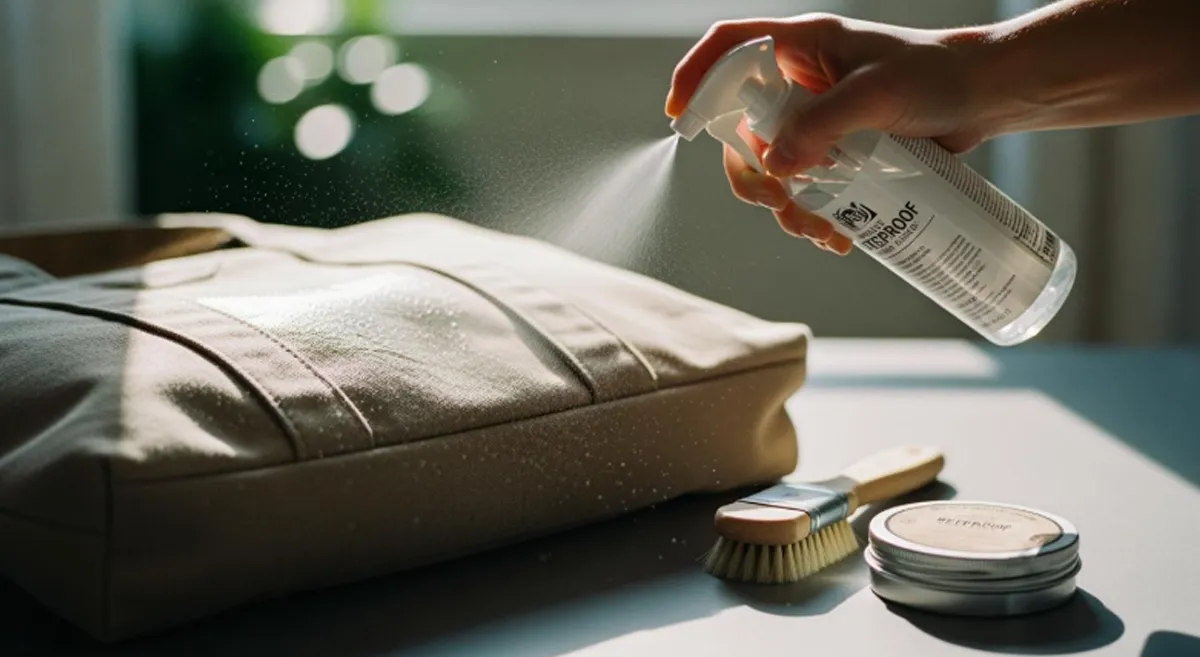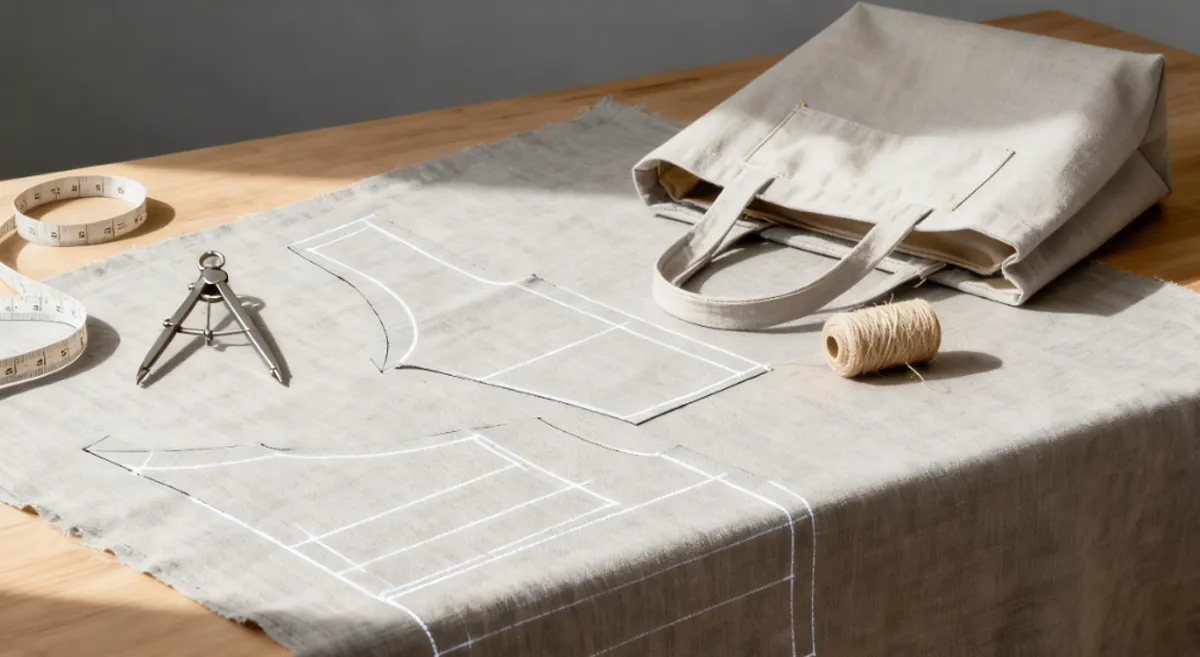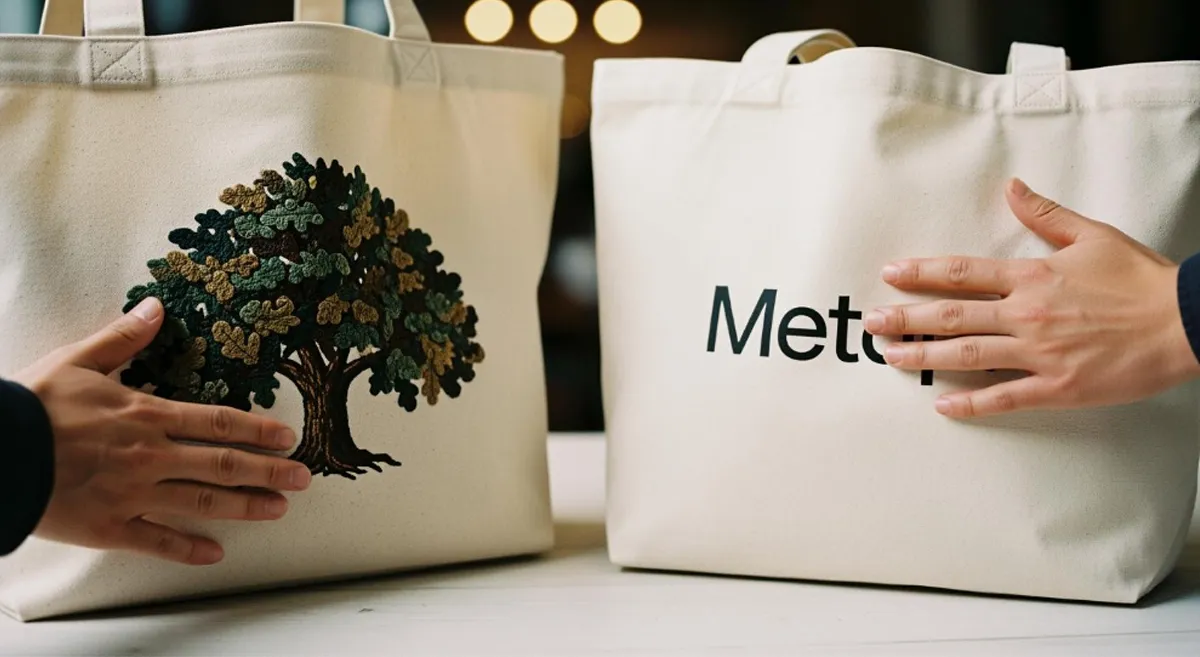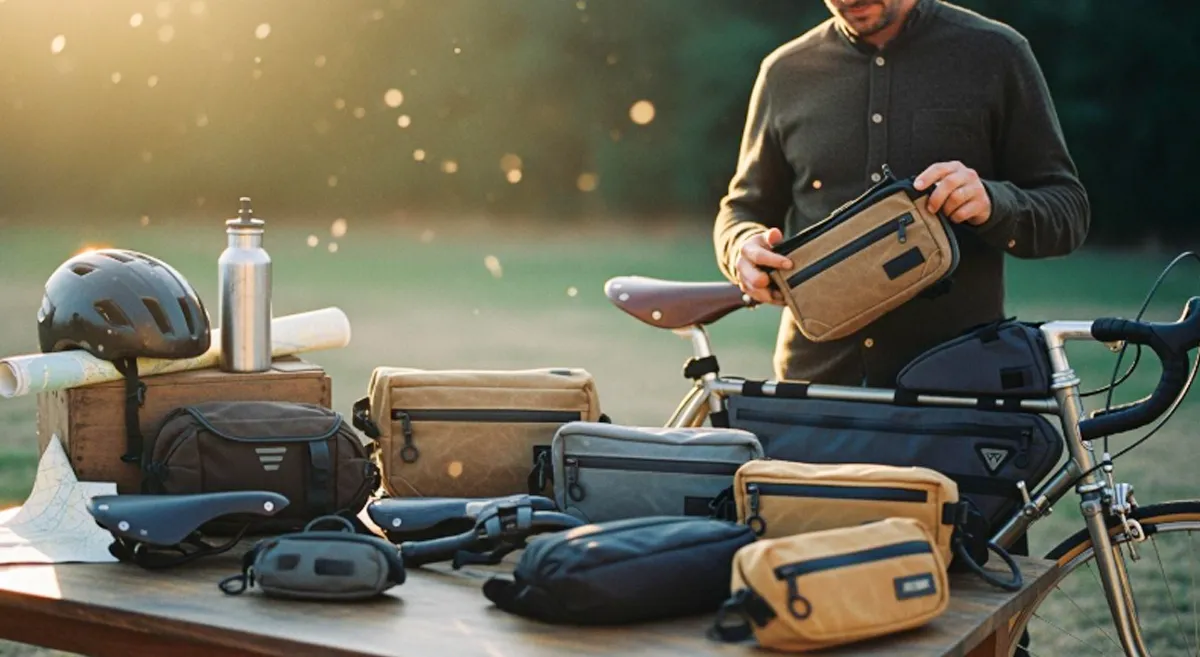
You want the best bike bag for every ride. A good bike bag uses strong material, keeps your gear dry, and stays secure on your bike. The right design gives you easy access and fits your style. You can choose from popular options like panniers, handlebar bags, saddle bags, frame bags, top tube bags, and tool bags. Each design has features that make it functional. Pick a functional design that matches your needs for daily trips or long rides.
Key Takeaways
- Pick a bike bag that is strong and waterproof. This will keep your things safe in any weather.
- Find bags with strong seams and zippers. This stops leaks and helps the bag last longer.
- Choose a mounting system that fits your bike well. This keeps your bag steady and helps you focus when you ride.
- Look for bags with bright colors or reflective parts. These make you easier to see when it is dark.
- Get a bag that holds enough for your trips. Think about what you need for short or long rides.
- Choose a bag that is easy to open and close. Smooth zippers and straps help you get your things fast.
- Clean your bike bag often and check for damage. This helps your bag last longer and work better.
- Try different ways to make your bag special. You can pick a style and features that fit you best.
Material & Durability
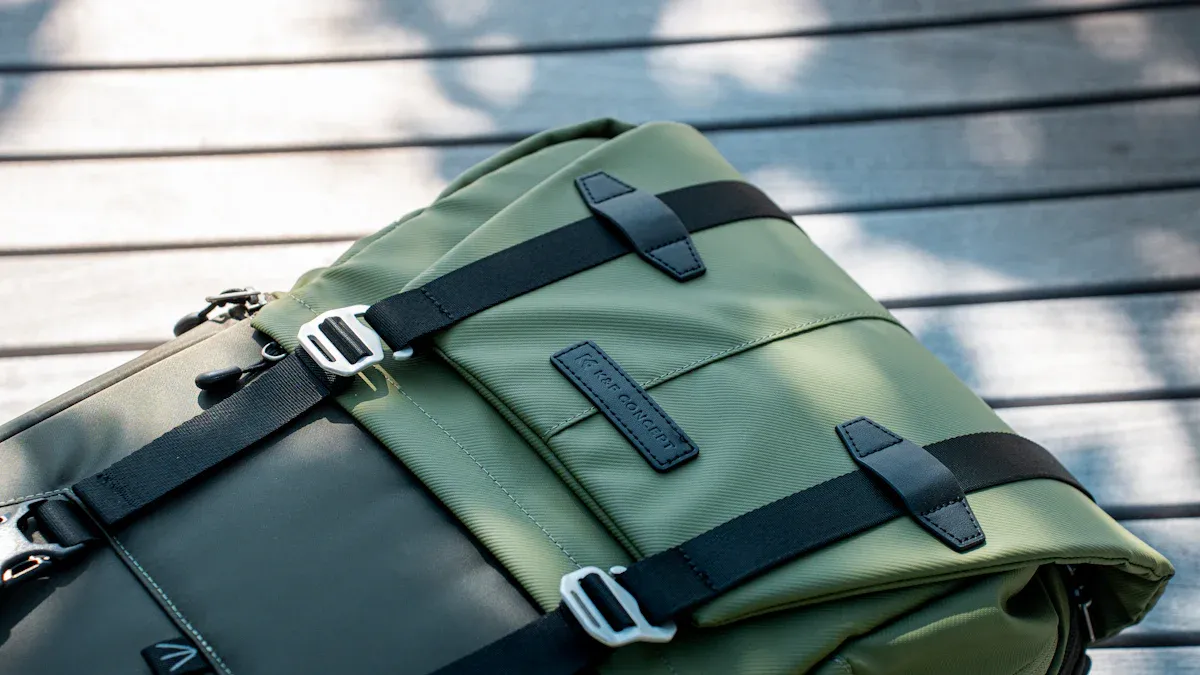
When you pick a bike bag, you want it to last through every ride. The right material and strong construction make a huge difference. A high-quality bike bag stands up to rough roads, rain, and daily use. Let’s break down what you should look for.
Waterproof Fabrics
You never know when you’ll get caught in the rain. That’s why waterproof material is a must. It keeps your gear dry and safe, even on wet days. Many top brands use special fabrics and coatings to block water and protect your stuff.
Nylon vs. Other Materials
Nylon is one of the most popular choices for bike bags. It’s tough, light, and flexible. You’ll also see polyester and TPU (thermoplastic polyurethane) in many bags. Here’s a quick look at how these materials stack up:
| Property | Description |
|---|---|
| Durability | Stands up to wear and tear, even on bumpy rides. |
| Weather Resistance | Blocks water and UV rays, so your bag lasts longer. |
| Lightweight | Feels light on your bike, but still strong. |
| Easy Maintenance | Wipes clean after muddy or dusty rides. |
Some brands go even further. For example:
- CamelBak uses recycled ECOPAK fabric with an IPX5 waterproof rating.
- Pedrakox makes bags with military-grade 600D polyester TPU and triple-layer waterproof construction.
These features help you ride in any weather without worry.
Seam & Zipper Protection
A bag’s seams and zippers can be weak spots. Water can sneak in if they aren’t sealed well. Look for bags with taped or welded seams. Covered or waterproof zippers add another layer of defense. Some brands test their zippers by opening and closing them thousands of times, and even hang weights on them to make sure they don’t break. This means you can trust your bag to keep working, ride after ride.
Wear & Tear Resistance
You want a bag that can handle scrapes, bumps, and heavy loads. Strong fabrics and smart design help your bag last longer.
Reinforced Points
Check for extra stitching or padding at stress points, like where straps attach or where the bag rubs against your bike. Some bags use rivets or anchors that go through special tests, like pulling or rubbing with sandpaper, to make sure they don’t break or wear out. These details show the bag is built for real-world use.
Tip: If you ride often or carry heavy gear, pick a bag with reinforced corners and strong buckles. It will last much longer and keep your things safe.
A high-quality bike bag uses water-resistant material, strong seams, and tough hardware. These features make sure your bag can handle whatever your ride throws at it.
Attachment & Stability
When you ride, you want your bike bag to stay put. A bag that shifts or bounces can distract you and even cause problems with your balance. Let’s look at how you can keep your bag stable and attached, no matter where you ride.
Secure Mounting Systems
A secure mounting system makes all the difference. You’ll find several options, like Velcro straps, buckles, and quick-release clips. Each type has its own strengths. Velcro straps are easy to adjust and work well for quick trips. Buckles give you a tight hold and last a long time. Quick-release systems let you take your bag off fast, which is handy if you need to grab your gear in a hurry.
Here’s what you should know about keeping your bag stable:
- Always install your bag properly. This keeps you safe and comfortable while riding.
- Fasten straps tightly to spread the weight evenly. This stops the bag from slipping or swinging.
- Check your straps and brackets often. If you spot wear or looseness, fix it right away.
- Tighten handlebar straps so they stay taut, but don’t overdo it. You want them snug, not strained.
- Add a third contact point, like a strap around the head tube or steerer. This helps prevent side-to-side swaying and up-down bouncing, especially on rough roads.
Tip: Stability comes from how you install your bag, not just from fancy mounting systems. Take a minute to set it up right before every ride.
Velcro, Buckles, Quick-Release
You’ll see Velcro, buckles, and quick-release systems on many bike bags. Velcro is simple and quick. Buckles offer a strong grip and last longer. Quick-release clips are perfect if you need to remove your bag often. Pick the system that matches your riding style and how often you need to access your gear.
Compatibility with Bike Types
Not every bag fits every bike. You need to think about your bike’s frame, rack, and handlebar setup. Some bags work best with road bikes, while others fit mountain bikes or touring bikes. If you use racks and panniers, make sure they match your bike’s parts. Sometimes, mixing brands like Shimano can cause problems, especially between mountain and road bike components.
Many riders have found success with bags like the Evoc Pro, which fit different bike types and brake systems. Always check the specs before you buy. This saves you time and hassle later.
Frame, Rack, Handlebar Options
Frame bags fit inside your bike’s triangle. Rack bags sit on top of rear or front racks. Handlebar bags attach to the front of your bike. Each style has its own mounting needs. Make sure your bag matches your bike’s setup for the best fit.
Vibration Control
Bumpy roads and trails can shake your gear. Good bike bags use padding or cushioning to absorb shocks and keep your stuff safe. Some bags have special compartments to organize and stabilize your items. This stops things from moving around and getting damaged.
Bike travel bags also protect against rain, dust, and sun. They keep your bike’s parts and your gear secure during transit. If you ride on rough terrain, look for bags with extra padding and smart compartments.
Note: Regularly check your bag’s mounting points and padding. This helps keep your gear safe and your ride smooth.
Weather Resistance
All-Conditions Protection
You want your bike bag to handle any weather. Rain, dust, and road spray can ruin your gear if your bag does not protect it. Many cyclists look for bags that keep everything dry and clean. You might wonder how many bags really offer this kind of protection. Here are some facts:
- 68% of Ortlieb’s bike bag models sold in 2023 are waterproof and weather-resistant.
- 58% of global cyclists prefer waterproof and dustproof designs, especially in Europe and Asia-Pacific.
These numbers show that most riders care about weather resistance. You should look for bags made with splash-proof material. This type of fabric blocks water and keeps out dust. Some bags use special coatings or layers to stop rain from getting inside. You can ride in wet weather and not worry about your phone, snacks, or tools.
Rain & Road Spray
Rain and road spray can sneak into your bag if it is not built well. You need a bag with sealed seams and covered zippers. Fewer seams mean less chance for water to get in. Sealed seams work best on PVC coated fabric. Some bags have flaps or covers over the zippers to keep water out. These features help you ride through puddles and storms without soaking your gear.
Tip: Always check the seams and zippers before you buy a bag. If you see gaps or loose stitching, water might get inside during a heavy rain.
Maintenance Tips
You want your bike bag to last and keep its weather resistance. Simple care can make a big difference. Here are some easy steps you can follow:
- Clean your bag with fresh water after each ride. This removes dirt and road salt.
- Dry the bag completely before storing it. This stops mold and keeps the fabric strong.
- Inspect seams, closures, and zippers regularly for damage.
- Use mild detergents to clean off debris and keep your bag looking new.
- Check for wear, tears, or UV damage during regular inspections.
- Store your bag in a cool, dry place away from sunlight.
If you follow these steps, your bag will keep its protective features for a long time. You will not have to worry about leaks or damage, even after many rides.
Note: Regular care helps your bag stay tough and ready for any weather. A well-maintained bag protects your gear and makes every ride better.
Visibility & Safety
You want drivers to see you on the road, especially when you ride at night or in low light. The best bike bags help you stand out and stay safe. Let’s look at how smart design choices make a big difference.
Reflective Details
Reflective details on your bike bag catch light from car headlights and street lamps. These features help you shine in the dark and grab attention. You might notice that some bags have reflector strips or patches on the sides, front, or back. Placement matters. When you pedal, reflective details move and flash, making you more visible than if you wore a static vest or jersey.
Placement & Effectiveness
Where you put reflective details changes how well drivers see you. Bags with reflector strips on moving parts, like spokes or pedals, stand out more than those with only static patches. Here’s a quick look at how different placements work:
| Evidence Type | Findings |
|---|---|
| Reflective Material in Motion | More effective at drawing drivers’ attention compared to static clothing. |
| High-Visibility Apparel | Improves detection time but does not change driver behavior. |
| Combination of Reflective Elements | Reflective spoke clips or pedal lights in motion are more noticeable than static fluorescent jerseys. |
You want your bag to have reflective details in spots that move as you ride. This helps drivers spot you faster. Studies show that reflective materials work best when they move. Even so, being visible does not always change how close cars pass you. You still need to ride with care.
Light Mounts
Some bike bags come with special mounts for lights. You can attach a rear light or a small LED to your bag. This adds another layer of safety. If your bag does not have a built-in mount, you can use a clip-on light. Make sure your light faces the right way and stays secure. A bright light helps you stand out in traffic and lets others know where you are.
Tip: Check your light before every ride. A working light makes a big difference when the sun goes down.
High-Visibility Colors
Bright colors like neon yellow, orange, or lime green help you get noticed during the day. Many cyclists say that drivers miss seeing them, which leads to near-miss incidents. You want your bag to pop against the background. Some studies suggest that wearing reflective clothing may not always lower accident rates, but visibility still matters. The research is not clear, but most riders agree that high-visibility colors help.
- Neon colors catch the eye in daylight.
- Reflective details boost your visibility at night.
- A mix of both gives you the best chance to be seen.
You can choose a bag with bold colors and reflective details for all-around safety. This way, you stay visible whether you ride in the sun or after dark.
Design & Usability
When you look for a bike bag, you want a smart design that makes your ride easier. The best bags balance compact style, enough storage space, and user-friendly features. Let’s break down what matters most for you.
Capacity & Compartments
You need the right capacity for your rides. Some days you just want a compact bag for your phone and keys. Other times, you need more storage space for snacks, tools, or a rain jacket. The design of your bag should match your routine.
Daily vs. Long-Distance
Daily commuting bags and long-distance touring bags often share similar capacity ranges. You might think touring bags are always bigger, but many compact options work for both. Here’s a quick look at how capacity compares:
| Type of Bag | Capacity Range |
|---|---|
| Daily Commuting Bags | 0.3 liters to 16 liters |
| Long-Distance Touring Bags | 0.3 liters to 16 liters |
If you ride to work, a compact bag with 2-8 liters of capacity usually fits your needs. For longer trips, you may want a bag with more compartments and up to 16 liters of capacity. You can choose a design with separate pockets for your phone, wallet, and tools. This keeps everything organized and easy to find.
Expandable Options
Some bike bags have expandable designs. You start with a compact shape, then unzip or unfold extra storage space when you need it. This flexible capacity helps you carry more on days when you pack extra gear. Expandable compartments let you keep your bag compact most of the time, but give you options for bigger loads. You don’t have to switch bags for different rides.
Tip: If you want a bag for both short and long trips, pick a compact expandable design. You get the best of both worlds.
Easy Access & Adjustability
You want to grab your gear quickly, especially when you’re on the move. Easy access and adjustability make your bag more user-friendly. Cyclists say these features matter a lot.
Zippers, Openings, Straps
Bags with wide openings and smooth zippers help you reach your stuff fast. You don’t want to fumble with tight pockets or tricky closures. Adjustable straps let you change the fit, so your bag stays compact and secure. Many cyclists prefer larger saddle bags with easy-access designs. You can add small compact bags for tools or snacks, so you don’t need to stop riding to grab what you need.
- Cyclists like easy-access designs for quick gear changes.
- Customizable bags with adjustable straps fit different bikes and riding styles.
- Extra compact bags for tools and snacks make your ride smoother.
A good design uses zippers that glide easily, openings that let you see inside, and straps you can adjust. These user-friendly features make your bag compact, practical, and ready for any ride.
Note: When you shop for a bike bag, check how the zippers work and how easy it is to open and close. A compact bag with smart design saves you time and keeps your ride stress-free.
How to Choose the Best Bike Bag
Picking the best bike bag can seem hard at first. But you can make it easy by thinking about how you ride and what you need to bring. Let’s look at some steps to help you find the right bag for your bike and your trips.
Matching Bag Style to Needs
You need a bag that fits your daily rides. Do you ride to school, go on trails, or take long trips? Each type of ride needs a different bag. Here’s a simple chart to help you pick the right bag for your trip:
| Trip Type | Ideal Capacity (L) | Recommended Bag Combination |
|---|---|---|
| Short commute | 3–5 | Saddle + Top Tube |
| Day trip | 10–15 | Frame + Handlebar |
| Weekend touring | 25–40 | Frame + Handlebar + Panniers |
| Multi-day expedition | 50+ | Modular system setup |

Think about what kind of riding you do:
- Road cycling and commuting need slim bags that stay steady.
- Mountain and gravel riding need thicker bags that can take bumps.
- Touring and bikepacking need bags with lots of space and even weight.
- Gravel adventure and endurance racing need bags that are light and shaped for speed.
- Electric bikes need bags with spots for battery and wires.
Handlebar, Frame, Seat Bags
Handlebar bags are good for snacks, maps, or your phone. Frame bags fit in the middle of your bike and hold bigger things. Seat bags, or saddle bags, are great for tools and spare parts. If you want to carry tools and spares, a saddle bag is a smart pick. You can use more than one bag style to make your perfect setup.
Best Cycling Saddle Bags
Saddle bags go under your seat and keep your things close. The best cycling saddle bags use strong materials, smart shapes, and easy ways to attach. You want a bag that stays in place, opens fast, and keeps your stuff dry.
| Feature | Best Cycling Saddle Bags | Standard Models |
|---|---|---|
| Materials | High-quality, durable | Basic materials |
| Construction | Robust, well-designed | Standard design |
| Ease of attachment | Quick, secure | May require tools |
| Storage space | Ample, organized | Limited space |
| Stability | Minimal rattling | Prone to movement |
| Ease of opening/closing | User-friendly | May be cumbersome |
| Organization features | Specialized pockets | Few or none |
| Reflective elements | Yes | Rarely included |
| Tail light clips | Yes | Not common |
| Water resistance | High | Variable |
The best cycling saddle bags often have:
- A pocket just for a mini-tool.
- Extra pockets to keep things neat.
- Soft padding to stop rattling.
- A clip for a taillight to help you be seen.
Saddle bags sit under your seat, so they get wet and dirty from the back tire. That’s why a good cycling saddle bag uses water-resistant or waterproof material. This is important if you ride when it’s wet outside.
Key Features to Look For
When you shop for the best cycling saddle bags, remember these five things:
- Size: Pick a saddle bag that fits your bike. Check the size before you buy.
- Style: Choose a style that works for you, from small to big.
- Material: Look for strong, weather-resistant fabrics like nylon or leather.
- Price: Decide how much you want to spend. Saddle bags can cost less than $20 or over $100.
- Organization: Find a bag with pockets for tools, spares, and a taillight clip.
Tip: For a good bike bag for everyday rides, look for easy attachment, water resistance, and enough space for tools and spares.
Practical Checklist
You want to make sure your bag has everything you need. Here’s a simple checklist to help you pick the best bike bag:
| Factor | Description |
|---|---|
| Carrying capacity | Does the bag hold all your gear for your riding style? |
| Attachment & portability | Can you remove the bag easily? Is it secure on your bike? |
| Weather resistance | Will the bag protect your gear from rain and harsh conditions? |
| Weight & profile | Is the bag lightweight and aerodynamic for faster rides? |
- Weather proof: Make sure the bag can handle sun and bad weather.
- Attachment options: Check how the bag attaches for safety and ease.
- Center your weight: Pick a bag that helps you stay balanced on your bike.
It’s smart to buy from brands you trust. You can read reviews to see how the bag works for other people. Buying a good bag means you won’t need to replace it often.
Note: The best bike bag fits your bike, matches your riding style, and keeps your gear safe. If you want a saddle bag for extra gear, look for one with special pockets and water resistance. You’ll feel good knowing your things stay dry and safe.
Customization & Branding
You want your bike bag to feel like it was made just for you. Customization lets you pick features that match your riding style, your bike, and even your personality. You get more than just a bag—you get a tool that works exactly how you want.
Custom Features
Custom features can turn a good bike bag into your favorite piece of gear. You might want a map pocket for flat objects, or a hydration port for easy water access. Specialized pockets help you organize your tools and snacks. Some riders ask for custom colors or patches to show off their style. Here are a few ways custom features make your bag better:
- Map pockets keep your route easy to reach.
- Hydration ports let you drink without stopping.
- Special pockets hold tools, snacks, or keys.
- Custom colors and patches make your bag unique.
You can even ask for features that fit your exact needs, like extra space for a camera or a spot for your phone. These details make your rides smoother and more fun.
Brand Personalization
Brand personalization is a big trend in bike bags. You want your gear to match your look and your needs. Manufacturers now offer options that let you pick colors, add logos, or choose special designs. This makes your bag stand out and helps you feel connected to your gear.
When you personalize your bag, you build a stronger bond with the brand. You feel like the company understands you. This connection makes you more likely to buy from them again. Cyclists who get custom bags often become loyal fans and recommend the brand to friends.
Working with Manufacturers
Working with a manufacturer to create your custom bike bag is easier than you think. You start by sharing your ideas and needs. You might want a bag that fits your bike perfectly or matches your favorite color. Here are some things to consider:
- Fit: Make sure the bag matches your bike and setup.
- Load characteristics: Think about what you carry and how the bag will hold it.
- Space utilization: Use every inch of space on your bike.
- Weight distribution: Keep your ride balanced and smooth.
- Lining: Ask for strong, waterproof linings.
- Fabric choices: Pick materials that last and protect your gear.
- Design process: Share a clear idea of what you want.
You can follow these steps to get started:
- Draw a rough sketch of your dream bag.
- Give the manufacturer your measurements and special requests.
- Visit the maker for tricky designs or send them your gear for a perfect fit.
A good manufacturer uses strong materials, smart patterns, and expert sewing. They test the bag to make sure it keeps water out and holds up under heavy loads. You also get to choose branding options, like logos or colors, to make your bag truly yours. Some riders even ask for aerodynamic race bags to help them go faster.
Tip: If you want a bag that fits your style and needs, talk to a manufacturer about custom options. You’ll get a bag that works better and lasts longer.
Conclusion
You want a bike bag that fits your rides and keeps your gear safe. Experts say waterproof material, secure mounting, reflective details, and a smart design matter most. Use the checklist to compare bag types and find the best overall option for your needs. Custom solutions give you features like eco-friendly fabrics and organized compartments. If you want a bag made just for you, reach out to us. We offer custom bike bags designed for your style and brand.
FAQ
What size bike bag should you choose for daily commuting?
You want a bag between 2 and 8 liters. This size holds your phone, wallet, and tools. If you carry a laptop or lunch, pick a larger bag.
How do you clean a waterproof bike bag?
Wipe the bag with a damp cloth. Use mild soap for tough stains. Let it air dry before you store it. Avoid harsh chemicals.
Can you use one bike bag for different bikes?
Yes, you can. Look for bags with adjustable straps or universal mounts. These fit most frames, racks, and handlebars.
What features help keep your gear dry in heavy rain?
You need sealed seams, waterproof zippers, and coated fabric. Bags with rain covers offer extra protection. Always check for these features before you buy.
How do you stop your bike bag from bouncing on rough roads?
Tighten all straps. Use bags with extra contact points. Some bags have anti-vibration pads. Check your setup before every ride.
Are reflective details really important for safety?
Yes! Reflective strips and patches help drivers see you at night. You stay safer when your bag stands out in low light.

